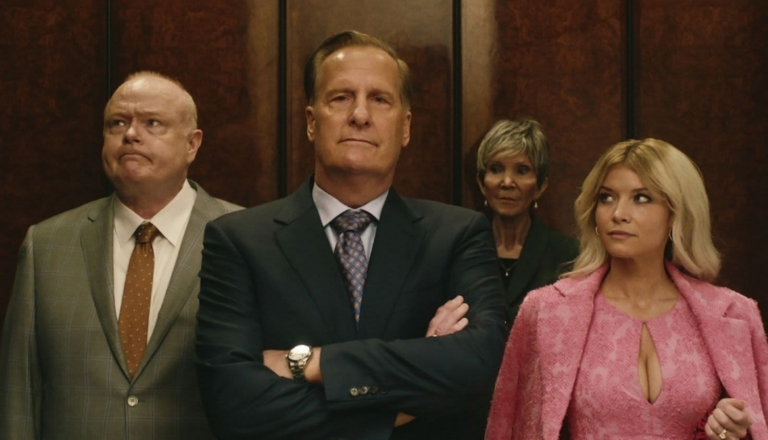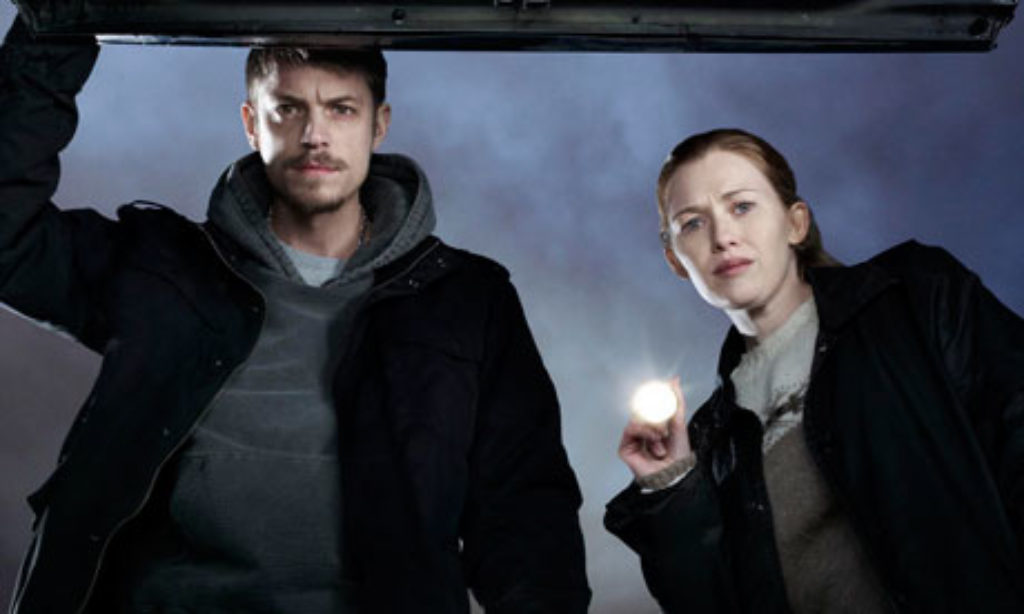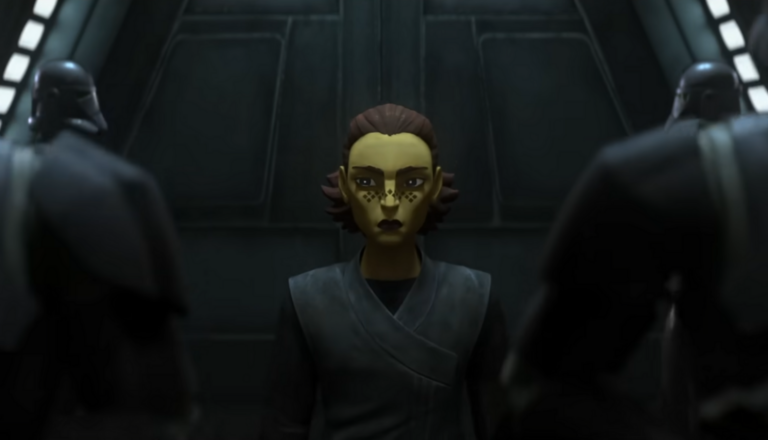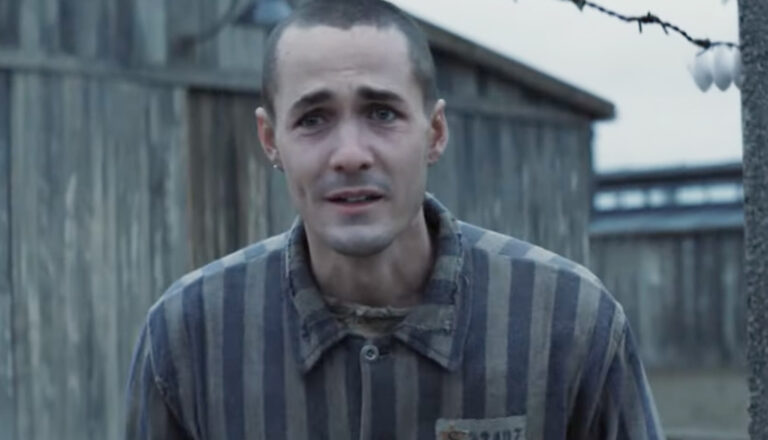
A Man in Full
Talent and intrigue ultimately can’t cloak the truth about this vulgar, crass and graphic drama on Netflix.

Perhaps reflecting its dark whodunit vibe, The Killing has become one of the most puzzling shows on television. A stylish noir murder mystery (adapted from the critically acclaimed Danish series Forbrydelsen), the series has been at turns revered for its haunting atmospherics and reviled for its slow, frustrating pace. It lurked around the fringes of AMC for its first three seasons, then bolted over to Netflix for its fourth.
Now detectives Sarah Linden and Stephen Holder are concealing a murder of their own. At the end of Season 3, Linden killed a killer in cold blood. And she and partner Holder must cover up the deed from their own co-workers, of course while investigating yet another case.
The Killing superficially resembles myriad police and forensics shows vying for eyeballs on broadcast and cable TV. But with each episode representing one day of discoveries and setbacks, its focus on solving a murder case over a whole season (or sometimes two seasons)—instead of managing one or two mysteries in the course of an hour—sets it apart. While some viewers and critics have grown impatient with the snaillike progress, there’s no question it more truly mirrors the painstaking, sometimes agonizing path many police investigations must take in real life. It also compels us to grapple with the horror that murder truly is, something most crime shows can’t—or don’t—take the time to do.
In earlier seasons, we saw what the unexpected, tragic loss of someone can do to friends and family. Now, through the eyes of Linden and Holder, we’re given yet another provocative angle: what a killing does to a killer.
TV Guide’s Matt Roush said of the show, “What really stands out for me, in this age of cookie-cutter procedurals, is how The Killing dramatizes the devastation a violent death has on a family, a community, on the people involved in the investigation. Nothing about this show is routine.”
In the midst of that dramatization, The Killing plumbs the depths of some pretty weighty themes, including forgiveness, grief, parenthood, ethical compromise, drug addiction and personal brokenness. But the move to Netflix from AMC didn’t do anything to lessen the already prodigious amount of negative content found here. Indeed, the quotient has been ratcheted up in some respects. Despite the TV-14 rating most episodes are assigned, viewers are subjected to a battery of f- and s-words. And there are references, both visual and verbal, to (naturally) violence, sexuality and drugs.
“Blood in the Water”
Linden and Holder, along with their special investigations unit leader James Skinner, plan to cover up a murder, graphically describing it as they do so. Meanwhile, they’re confronted by a new case—that of wealthy parents apparently killed by their 17-year-old son, who tried to kill himself thereafter.
We see the foot of a corpse (still attached) at a crime scene. Blood is spattered everywhere—sprayed across white walls like modern art and pooled on white floors like spilled juice. The suspect sports a grotesque wound on his head (held closed with dozens of stitches) and a black eye, among other injuries. Linden showers to get blood off her body, and we see her bare back and shoulders. She takes an abortive morning-after pill.
Holder smokes, sharing cigarettes with a teen. The f-word is tossed into the mix at least five times, the s-word six (both uncensored). A host of other profanities tags along, including “a–“, “b–tard,” “h—,” “d–n” and “d–k.” Jesus’ name is misused at least twice. We hear a coarse reference to testicles.
Holder refers to Linden as a “repressed Catholic.” When Holder’s girlfriend reveals that she’s pregnant, he asks her to marry him. “I want to be there for you and have a family,” he says. “I want to be a good man.”
“Donnie or Marie”
It’s election day, and wheelchair-bound mayoral candidate Darren Richmond will learn how his speech the night before—when he confessed to attempting suicide the night of Rosie’s murder—will affect his election chances. Linden and Holder begin to suspect that either Jamie or Gwen (referred to as Donnie and Marie) might’ve been involved in the murder. Mitch, Rosie’s mother, returns to her family after several days’ absence—receiving a chilly reception by her older son and recriminations from both her husband and sister. “You still had so much, Mitch,” sister Terry says. “And you walked out.”
Detectives talk in detail about Rosie’s murder and make ethically iffy deals with politicians in order to better pursue the case. There’s a suggestion that Chief Jackson and her head of security, Roberta, may be involved in a lesbian relationship—and that Jackson may also be abusive. A councilman suggests that Gwen handles her politician clients through the use of her “va-jay-jay.”
Both Linden and Holder smoke cigarettes frequently. A casino figures prominently in the investigation, and we hear a valet discuss how patrons get “wasted” on the weekends. We hear about underhanded and ethically uncertain actions. And we see Holder being a jerk to the folks he interviews. Characters say the s-word twice; we also hear “d‑‑n,” “h‑‑‑,” “p‑‑‑y” and “a‑‑.” God’s name is misused a handful of times.
“Stonewalled”
Linden is frustrated by an FBI investigation of her prime suspect, schoolteacher Bennet Ahmed. The feds believe Ahmed is the lynchpin in a terrorist cell, and they confiscate Linden’s evidence against him. Linden believes the FBI agents have also gathered evidence she could use, and she sneaks into an FBI van to photograph it (for which she’s reprimanded). Linden is also suspicious of Holder’s strange behavior, and she tails him to what turns out to be an Alcoholics Anonymous meeting. There, he confesses his former drug addiction to the group and talks about his hope that his family can forgive him.
Along those lines, a woman who accidentally killed local politician Darren Richmond’s wife testifies at a parole hearing and begs for forgiveness. Richmond, however, can’t forgive her, slamming his fist into a bathroom mirror (shattering it and cutting his hand) before making a compromising decision to leak negative information about his campaign opponent.
Linden chastises her son, Jack, for emailing evidential pictures of Rosie to his friends, a leak that quickly makes the news. Profanity includes an s-word, a half-dozen uses each of “h‑‑‑” and “a‑‑,” and one use each of “b‑‑ch,” “t-tty” and “pr-ck.” We see several folks smoke.


After serving as an associate editor at NavPress’ Discipleship Journal and consulting editor for Current Thoughts and Trends, Adam now oversees the editing and publishing of Plugged In’s reviews as the site’s director. He and his wife, Jennifer, have three children. In their free time, the Holzes enjoy playing games, a variety of musical instruments, swimming and … watching movies.

Paul Asay has been part of the Plugged In staff since 2007, watching and reviewing roughly 15 quintillion movies and television shows. He’s written for a number of other publications, too, including Time, The Washington Post and Christianity Today. The author of several books, Paul loves to find spirituality in unexpected places, including popular entertainment, and he loves all things superhero. His vices include James Bond films, Mountain Dew and terrible B-grade movies. He’s married, has two children and a neurotic dog, runs marathons on occasion and hopes to someday own his own tuxedo. Feel free to follow him on Twitter @AsayPaul.

Talent and intrigue ultimately can’t cloak the truth about this vulgar, crass and graphic drama on Netflix.

Tales of the Empire is typical Star Wars fare. But in its exploration of what drives folk to the Dark Side, it can get a bit…darker.

The Tattooist of Auschwitz is a little like its titular character. It’s painful. It gets under your skin. And it just might leave a mark.

The Sonic spinoff blends explosive adventure and road-trip-buddy-comedy into a fun romp for both kids and diehard fans.